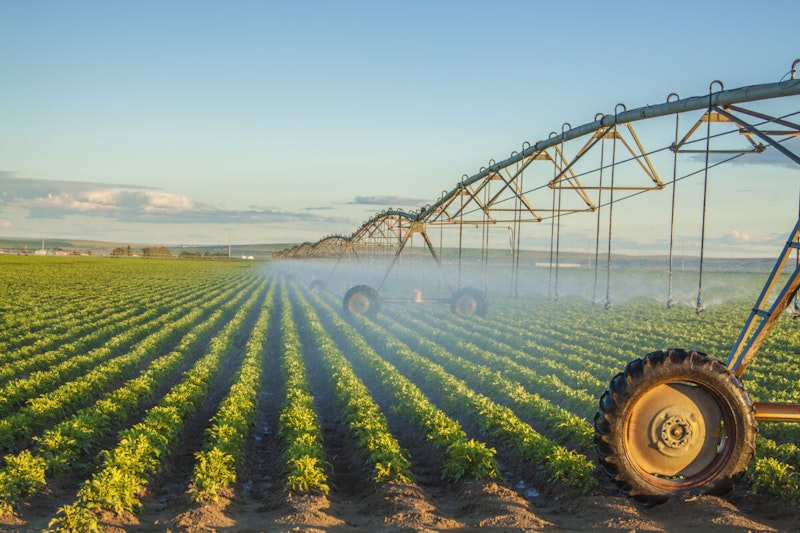Study Notes
GCSE Geography | Impacts of Water Insecurity (Resource Management - Water 3)
- Level:
- GCSE
- Board:
- AQA, Edexcel, OCR, Eduqas
Last updated 25 May 2024
Water insecurity is the lack of a reliable source of water, of appropriate quality and quantity, to meet the needs of the local population. It has many impacts...
Waterborne diseases
There are many reasons that water becomes contaminated, including raw sewage dumped into waterways, agricultural run-off from chemical fertilisers and pesticides, and toxic chemicals from industry that haven't been disposed of properly. Water contaminated with chemicals and bacteria is unsafe for human consumption, increasing the risk of waterborne diseases, such as cholera and typhoid. In LICs many people still have to use polluted rivers for their water needs, and as a result many die premature deaths linked to a lack of access to safe water.

Industrial output
Water insecurity has an impact on industrial output. This is because many manufacturing industries are ‘thirsty’ and uses lots of water in the production of goods like steel, textiles and in industrial chemicals. Water is also important in energy production, especially in the generation of hydroelectric power, but also as part of the cooling process in coal, gas and nuclear power stations. If there is less water available to these industries they may not function as normal. If companies have to pay more for water, they may charge more for their products.
Food production
Water insecurity has an impact on food production. This is because farming across the world uses more than two-thirds of global water supply, so in areas prone to unreliable rainfall and drought events, farmers will struggle to make a living or provide enough food for their own families as a lack of water for irrigation means that their crops won’t grow properly, and yields will be lower. It also has an impact on the quality of meat produced if livestock doesn’t have enough water to drink.

Conflict
With so many regions around the world suffering from water stress, water is a hugely valuable commodity, and many fear that in the future, as even more pressure is exerted on supplies, there is the potential for 'water wars' to break out. There are already several areas around the world where conflict is occurring because of shared water resources, for example, along the Mekong River in south-east Asia where China has built dams to reduce the risk of flooding and to generate HEP, which has had an impact further downstream as the reduced water level has affected farming and fishing industries in Vietnam and Cambodia.
But there are numerous other areas at risk of conflict over water...
India/Bangladesh - the River Ganges is one of the world's largest rivers and flows through northern India into Bangladesh and into the Bay of Bengal, which is part of the Indian Ocean. Barriers have been built by India to control the flow of water and reduce the risk of flooding, but this has affected water supply in Bangladesh, which has one of the world's highest population densities and a very high demand for water (particularly for agriculture).
Turkey/Syria/Iraq - these countries compete for water from the Tigris and Euphrates rivers which is a vital resource, particularly as Syria and Iraq have low rainfall. However, Turkey has built a series of dams along both rivers, affecting water supply further downstream in Syria and Iraq, meaning there is far less water available for agriculture and domestic use.
Israel/Jordan/Syria/Lebanon - these countries all experience water insecurity and compete for water from the River Jordan (which provides the border between Israel and Jordan). Israel extracts large quantities of water from the Sea of Galilee (a lake) which the River Jordan flows through, reducing water supplies for Syria and Lebanon downstream. The lack of water in this area means that Israel has to buy water from Turkey.
The Nile region - The Nile is the world's longest river and flows through 7 countries before it reaches Egypt. In the past the Egyptian government stipulated that the other countries cannot do anything to affect the flow of water coming into the country, such as building dams to control the flow of water. This angered several of the other countries who felt it was unfair that they could not maximise the water supply flowing through their country, particularly as Egypt had built the huge Aswan High Dam (pictured below) in the early 20th century, which has since been expanded. More recently the other countries along the Nile have constructed their own dams to control flooding and generate HEP, which has caused tensions with Egypt.

You might also like
Resource Development Stage
Study Notes

Climate Change, Water and the Economy
29th August 2017
McDonalds to start using paper straws
18th June 2018
Human impact on biodiversity
8th May 2019

Geography in the News: ‘Is it seaweed – or something more sinister?’
7th September 2022
